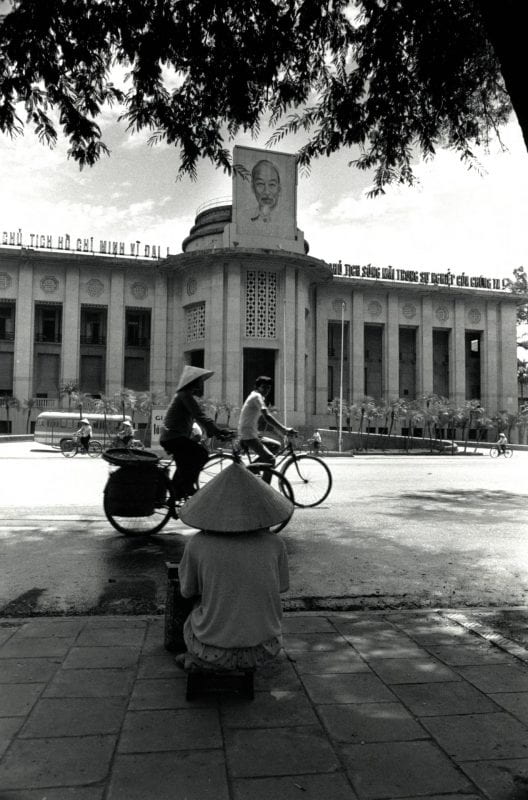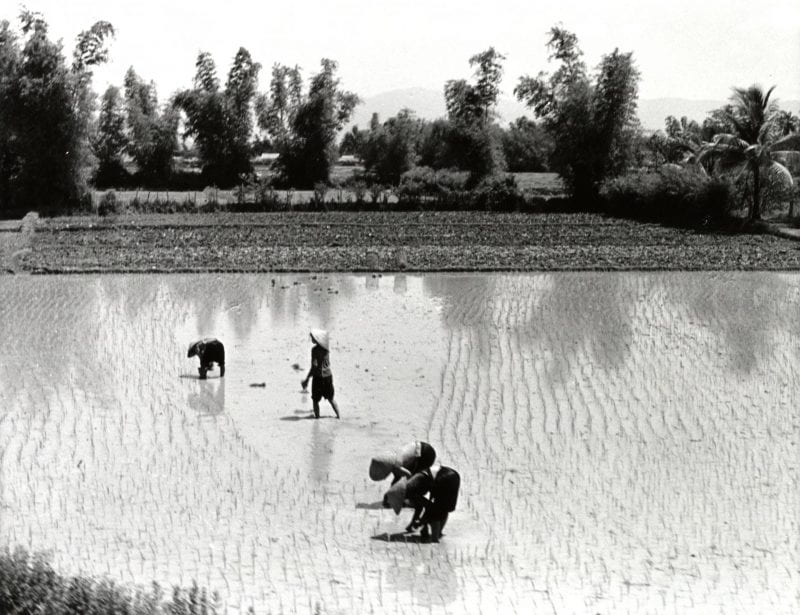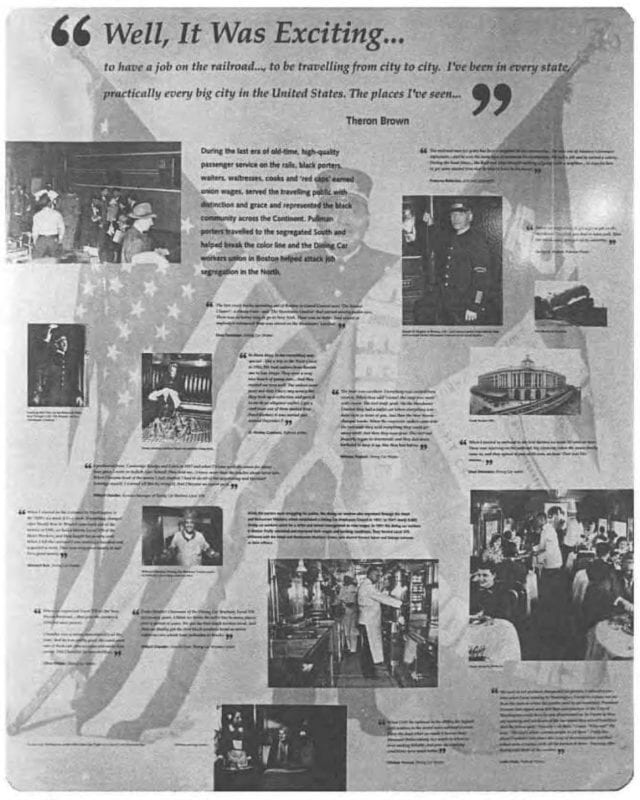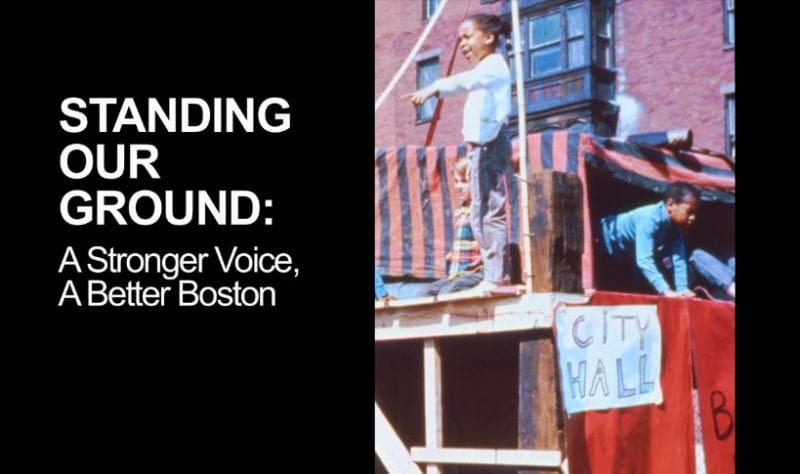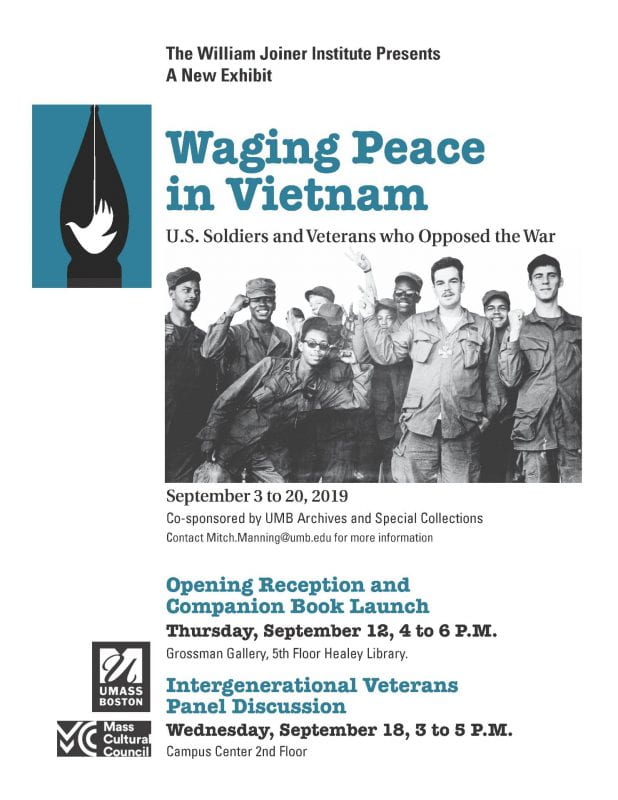Author: Shay Park, Archives Assistant
In 1988, educator, photographer, and UMass Boston alumnus Doug Clifford traveled to Vietnam with his wife. It was not Clifford’s first time to Vietnam, however. He served as an aerial reconnaissance film-lab technician during the Vietnam War—in other words, a photographer, who was trained by the United States Air Force along with other military cameramen to photograph the war. Reflecting on his first impressions of Vietnam, Clifford experienced “a sharp contrast” with the images he had seen in the U.S. media, which he understood to be invested in “how we could identify with American GIs, and how without substance or context were the Vietnamese” (1). Clifford saw this as one version of reality, with the other being “the reality of Vietnam” populated by “not just soldiers, VC and ARVN, but schoolchildren, farmers, merchants, and the countless others who worked at the bases”:
I tried to present Vietnam as a place where people lived, worked, went to school, and struggled with their lives, in spite of the war…. I wanted to take pictures of little children looking like children; I wanted the landscape to be shown for its beauty: the tropical sunsets were spectacular and with the monsoon came every shade of green, from rice stalks to the grass on the hills; and on some days the Central Highlands rose up through the low cloud cover like a panorama in a Chinese screen painting (1).
Though that is how Clifford described the photographs he took while stationed at Phu Cat Air Base from 1968 to 1969, that perspective of Vietnam and its people likely influenced the photographs he took on his return trip in 1988. These photographs, held in the Healey Library’s University Archives and Special Collections department, were originally exhibited and held by the William Joiner Institute for the Study of War and Social Consequences at UMass Boston. There are fifteen black-and-white photographs, and almost all feature human subjects, often children, many with their faces turned towards the camera. View the finding aid for this photograph collection.
In “Woman Farmer in Dalat Agricultural Region” a woman stands in front of harvested root vegetables. Her mouth is open and smiling, as if she is speaking to someone just out of the frame. Behind her stands a small child staring directly into the lens. The pattern of the child’s sweater is cheerful even in black and white. Other photographs are less candid but still lively. The children in “Two Young Boys Poised Happily While Older Woman Tended to Water Buffalo” are captured in close-up making faces at the camera. One smiles widely and the other scowls playfully. In the background and out of focus are the older woman and water buffalo, both turned away from the camera and the boys’ antics.
“Center of Hanoi on a Busy Weekend in Front of the Central Bank” shows a different scene, an urban street outside the State Bank of Vietnam in Hanoi. The image is framed by the sidewalk below and the boughs of a tree hanging above. Taken from behind a person crouched on the sidewalk, one can see bicycles crossing back and forth across the frame. A bus is visible behind the trees that line the front of the bank. A portrait of Ho Chí Minh overlooks the people moving about their day.
Two of the most striking photographs in the collection—“Pleiku Air Base” and “Rice Farming, near Phu Cat”—may not have been taken during his 1988 trip but were acquired together with the other photographs. In “Pleiku Air Base,” two women sit on a short wooden barrier, both dressed in fashionable camouflage print. One woman holds magazines in both hands and appears to be talking to someone out of frame, while the other looks down with a serious expression, playing a worn-looking guitar covered in tape. Pleiku Air Base was used by the United States Army during the Vietnam War but in 1975 was seized by the Vietnam People’s Army and then abandoned. Eventually it was developed into the Pleiku Airport for civilians. “Rice Farming, near Phu Cat” shows rice farmers miniaturized by the surrounding rice paddy. Unlike many of the other photographs in the collection, the environment dominates the frame. The expansive landscape makes it difficult to immediately perceive depth; only the farmers and the trees mark the relative distances.
Following the Vietnam War, Clifford returned to the U.S. and enrolled in classes at UMass Boston, including a few photography courses. Clifford’s work has been published in a variety of places, including student newspapers and The Vietnam Experience, a book series on the Vietnam War published by Time Life. Clifford was also an educator, beginning as a tutor in the Veterans Program at UMass Boston and retiring as an English professor at Bunker Hill Community College. In 2014, Clifford participated in a video interview about his time as a UMass Boston student for the UMass Boston Mass. Memories Road Show. In 2016, the Walter Grossmann Gallery in Healey Library at UMass Boston hosted an exhibit titled “Cuba Photographs, December 2015” that featured thirty photographs from Clifford’s trip to Cuba just six months after the United States and Cuba restored diplomatic relations. For Doug Clifford’s full remarks on his experiences as a photographer during the Vietnam War, visit his profile on the National Veterans Art Museum Collection Online.
References and further reading
1. “Douglas Clifford.” National Veterans Art Museum Collection Online, https://collection.nvam.org/ index.php?artist=Clifford%2C+Douglas.
2. Doug Clifford at the UMass Boston Mass. Memories Road Show: Video Interview. UMass Boston Mass. Memories Road Show collection. University Archives and Special Collections, Joseph P. Healey Library, University of Massachusetts Boston, https://openarchives.umb.edu/digital/collection/p15774coll6/id/8384/rec/3.
3. Elder, Andrew. “Photographs by Doug Clifford show Cuba in December 2015, six months after restored diplomatic relations with the U.S.” Open Archives News. University Archives and Special Collections, Joseph P. Healey Library, University of Massachusetts Boston, 30 November, 2016, https://blogs.umb.edu/archives/2016/11/30/photographs-by-Doug-clifford-show-cuba-in-december-2015-six-months-after-restored-diplomatic-relations-with-the-u-s.


